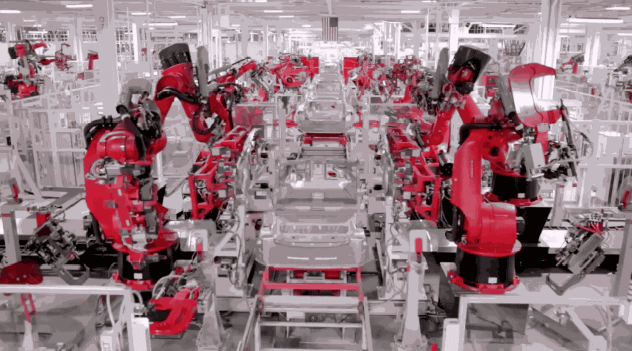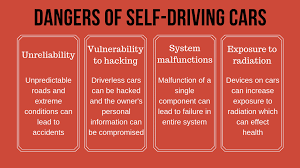BigIdea 5 Team Teach
Big Idea 5 Team Teach - Manas, Arhaan, Ahmad
Beneficial and Harmful Effects of Computing Innovations
Computing innovations significantly impact our society, yielding both beneficial outcomes and unintended harmful consequences. It’s essential to understand these effects to responsibly leverage technology.
Beneficial Effects
1. Medical Advancements
Computing innovations have revolutionized healthcare:
- Improved Medical Procedures: Advanced computing allows precise surgeries and effective treatment plans.
- Data-Driven Healthcare: Enhanced data collection leads to better diagnostic accuracy and patient care.

2. Enhanced Business Efficiency
Technology optimizes business processes through:
- Data Analytics: Businesses collect and analyze large datasets for improved decision-making.
- Automation: Reduces human error and increases productivity.

3. Artistic and Creative Expansion
Computing supports creativity and the arts by:
- Digital Art Platforms: Allowing artists to create, showcase, and monetize their work globally.
- Creative Collaboration: Digital platforms foster artistic collaboration across distances.

4. Convenience and Efficiency (Example: Drones)
Multirotor drones offer significant practical benefits:
- Fast Delivery Services: Improve the speed and efficiency of deliveries.
- Aerial Photography: Enable innovative filming and surveying techniques.

Popcorn Hack # 1
How do technological innovations impact society in both positive and negative ways? provide an example.
Harmful Effects
1. Cyberbullying
Digital connectivity can lead to cyberbullying, negatively impacting mental health:
- Increased Psychological Stress: Victims suffer anxiety, depression, and social isolation.

2. Privacy Loss
Growing digitalization raises serious privacy concerns:
- Data Exploitation: Personal data collection by companies without clear user consent.
- Surveillance: Increased monitoring through digital devices can infringe on individual privacy.

3. Dependence on Technology
Over-reliance on technology, particularly artificial intelligence (AI), poses significant risks:
- Reduced Critical Thinking: Excessive dependency prevents users from developing essential analytical skills.
- Loss of Research Skills: Dependence on AI for answers diminishes original research abilities.

4. Economic Impact: Job Displacement
Automation and computing innovations may negatively impact employment:
- Job Losses: Automation can replace human labor, leading to unemployment and economic strain.
- Economic Inequality: Technology-driven job displacement disproportionately affects low-skilled workers.

5. Negative Implications (Example: Drones)
Despite their advantages, drones also introduce new challenges:
- Privacy Violations: Unauthorized aerial photography and surveillance can violate privacy rights.
- Safety Risks: Flying drones in restricted areas poses physical dangers to aircraft and public safety.

Popular Artist Drake Loosing His Privacy
Popcorn Hack # 2
What is the meaning of negative effects of technology, and how can we use responsible programming to avoid and reduce these unintended harmful impacts
Beneficial and Harmful Effects of Self-Driving Cars
Beneficial Effects:
- Increased Safety:
- Reduces human error, which is responsible for the majority of car accidents.
- Advanced sensors and AI can respond faster and more accurately to hazards.
- Traffic Efficiency:
- Autonomous cars communicate with each other, optimizing traffic flow.
- Reduction in congestion through coordinated speed and spacing.
- Accessibility:
- Provides mobility for elderly, disabled, or those unable to drive.
- Enhances independence and quality of life for non-drivers.
- Environmental Benefits:
- Autonomous driving optimizes routes, reducing fuel consumption and emissions.
- Potential increase in the adoption of electric and sustainable vehicles.

Harmful Effects:
- Job Displacement:
- Threatens jobs of professional drivers, impacting employment and economic stability.
- Potential economic inequality for affected industries.
- Security and Privacy Risks:
- Vulnerable to hacking, leading to potential safety threats.
- Increased data collection raises concerns about privacy and surveillance.
- Ethical and Legal Challenges:
- Difficulty determining responsibility in case of accidents.
- Complex ethical decisions programmed into AI may lead to controversy.
- Infrastructure and Economic Costs:
- Significant initial investment in infrastructure upgrades.
- Potential increased maintenance costs due to advanced technology.

Finding Balance:
- Regulatory Frameworks: Implement clear laws and guidelines to address safety, privacy, and ethical concerns.
- Gradual Integration: Slowly introduce autonomous vehicles into existing traffic systems to allow adaptation.
- Public Education: Inform the public about the benefits, risks, and safe practices regarding autonomous vehicles.
Unintended Consequences
Technology often produces unforeseen effects. A single innovation can be perceived differently depending on personal and societal contexts:
- Social Media Example: While connecting people globally, social media also contributes to addiction and decreased productivity.
Dopamine Feedback Loops
Social media platforms intentionally trigger dopamine release, creating addictive behaviors:
- Health Issues: Excessive use leads to sleep deprivation, anxiety, depression, and loneliness.
- Productivity Loss: Users often find themselves distracted, reducing their efficiency in tasks.

Dopamine: Beneficial and Harmful Effects
Beneficial Effects
-
Motivation and Reward: Dopamine release motivates individuals to achieve goals and enhances productivity.
-
Learning Enhancement: Positive reinforcement aids memory retention and learning.
Harmful Effects
-
Addiction: Excessive dopamine release, as seen with social media, can lead to addiction.
-
Mental Health Issues: Prolonged dopamine-driven activities can result in anxiety and depression.
Finding Balance and Overcoming Addiction
-
Set Boundaries: Limit screen time and use technology intentionally.
-
Engage in Alternatives: Pursue physical activities, social interactions, and hobbies.
-
Mindfulness and Self-awareness: Regular reflection on technology use can help identify problematic patterns.
-
Seek Professional Help: If addiction becomes severe, professional counseling can provide effective strategies.
Popcorn Hack # 3
Why is it important to understand the unintended consequences of technology, especially dopamine-driven technology?
Conclusion
While computing innovations offer tremendous benefits across various fields, it is crucial to remain aware of their potential harms. Conscious and responsible use of technology can mitigate negative impacts and ensure it serves society positively.
Homework Hacks
Homework Hack #1: Rethinking AI for New Uses
- Task: AI is often used in new ways that weren’t planned. Your job is to think of a new way to use an AI invention.
Steps to Complete
- Choose an AI technology (e.g., Chatbots, Self-driving Cars, Facial Recognition).
- Research & Explain how it was originally intended to be used.
- Create a New Use Case – How could this AI be used differently than planned?
- Analyze the Impact – List two benefits and two risks of this alternative use.
Example Response:
- AI Innovation: Self-driving cars.
- Original Use: Designed for transportation.
- New Use Case: Used in farming to automate harvesting crops. Impact:
- Benefits – Increases food production, reduces human labor.
- Risks – May take jobs from farmers, expensive to implement.
Homework Hack #2: Ethical AI Coding Challenge
- Task: AI can cause problems if not designed well. Your job is to find a problem AI has caused and think of ways to fix it.
Steps to Complete
- Identify a Problem – Choose an AI issue (e.g., job loss, bias in hiring, misinformation).
- Describe the Risk – How does this AI create harm in society?
- Propose Two Solutions – What programming techniques or policies could reduce this risk?
- Write a Short Reflection (3-5 sentences) – Why is ethical AI development important?
Example Response:
- Problem: AI in hiring software, may favor certain groups over others.
- Risk: Biased hiring can make it harder for qualified people to get jobs.
- Solution 1: Use different kinds of training data to reduce bias in AI decisions.
- Solution 2: Have the human brain to review AI-generated recommendations.
- Reflection: AI is powerful, but it should be fair and transparent to avoid discrimination. Ethical programming ensures technology helps everyone.
Homework Hack #3: AI & Unintended Consequences Research Task
- Task: Many AI systems have unexpected effects on society. Your goal is to find and analyze a real-world AI example that led to unintended consequences.
Steps to Complete
- Find an Example – Research an AI-related news story where technology had unintended effects.
- Summarize What Happened – Explain the AI’s purpose and the issue it caused.
- Evaluate the Response – Did companies or governments take action to fix the issue?
- Propose a Preventative Measure – How could developers have avoided this problem?
Example Response:
- AI Example: YouTube’s recommendation system.
- What Happened: It was designed to keep users engaged but ended up spreading misinformation and harmful content.
- Response: YouTube changed its algorithm to reduce harmful recommendations.
- Prevention: AI developers should have tested for harmful patterns before launching the system.